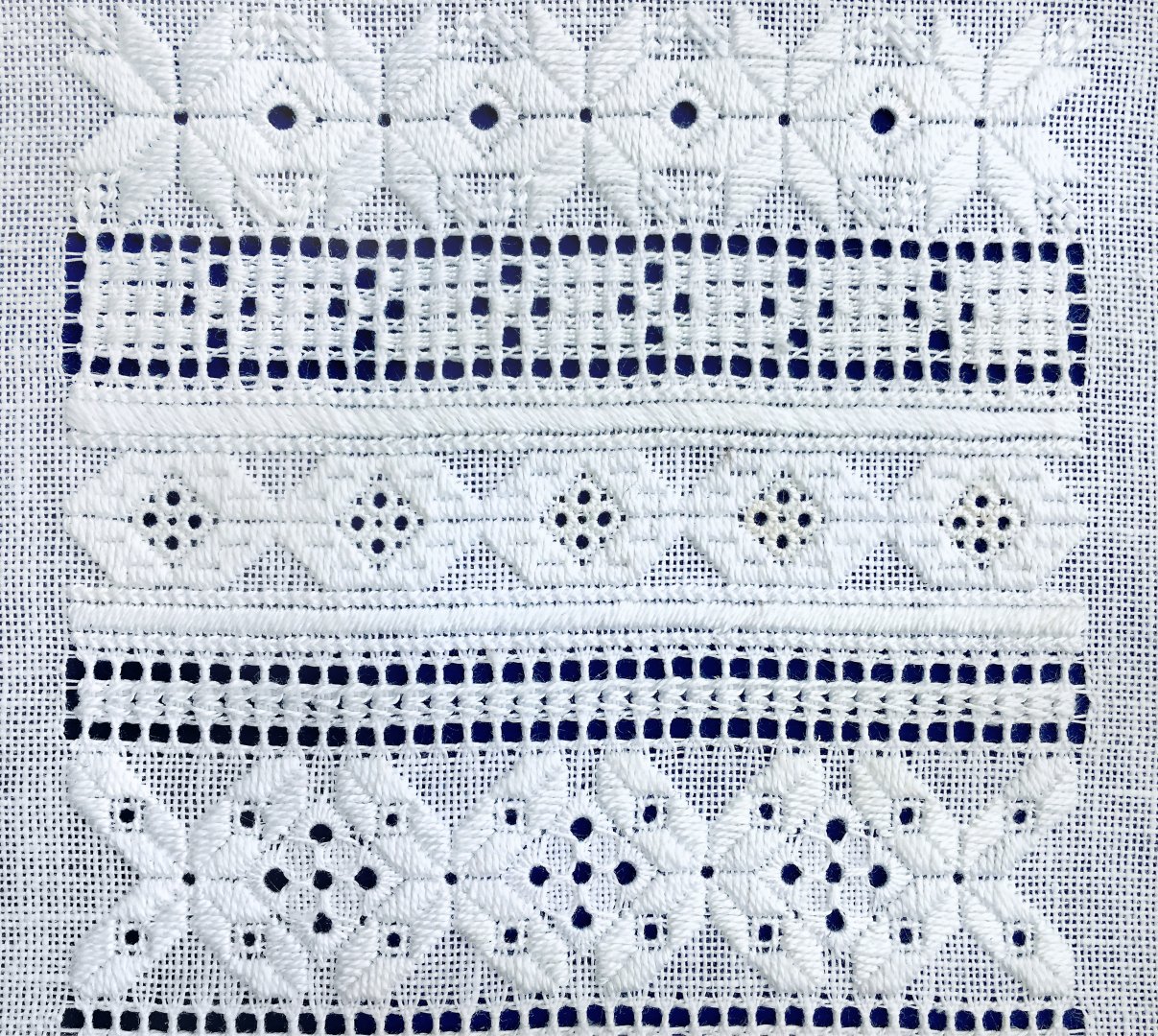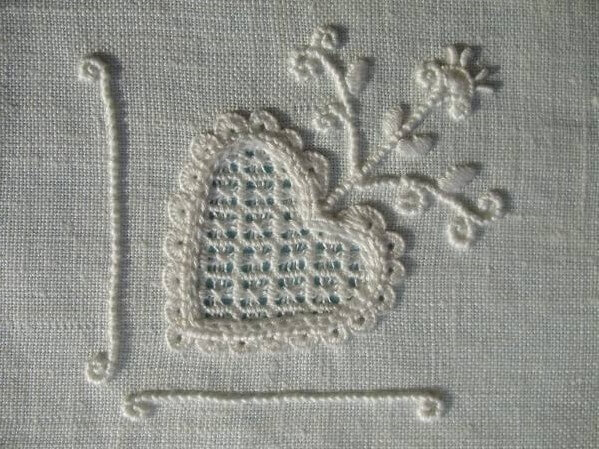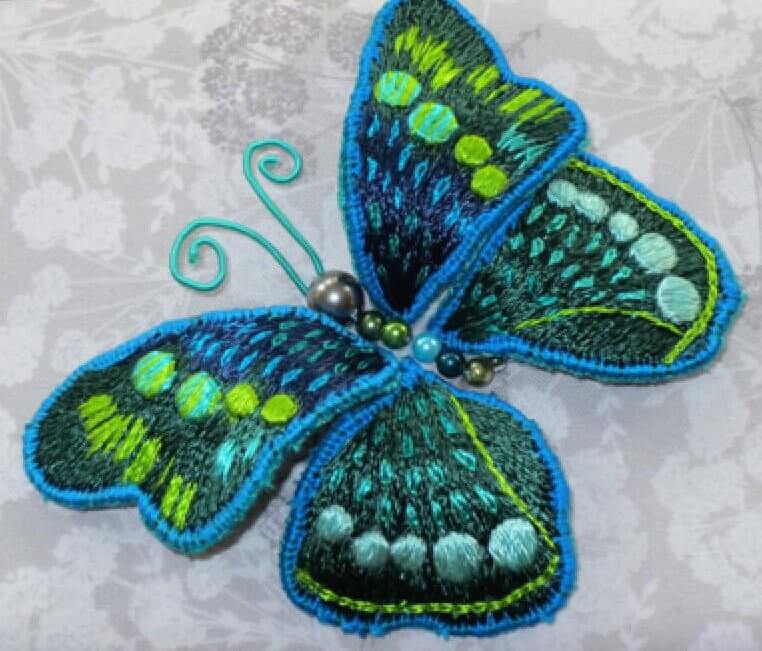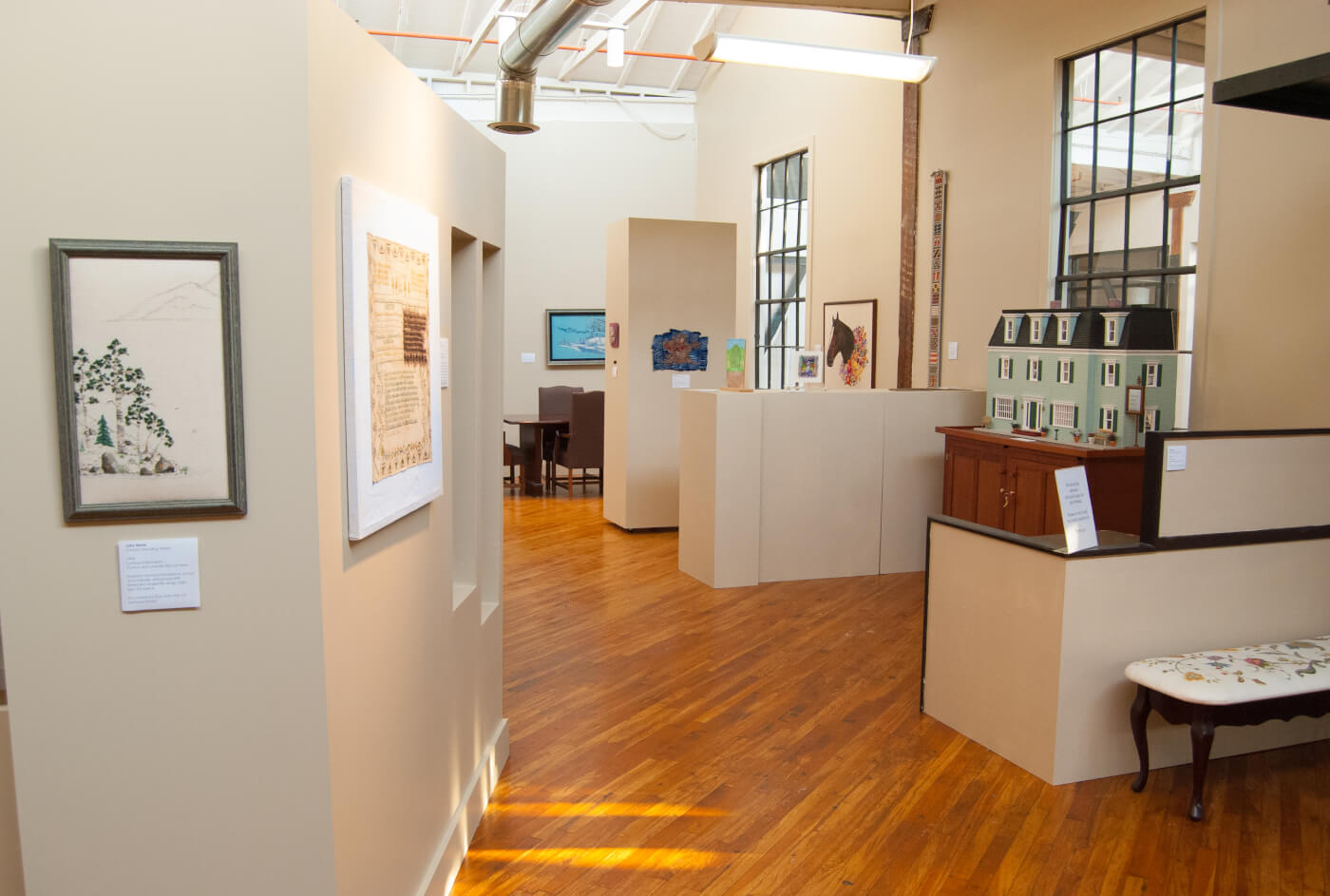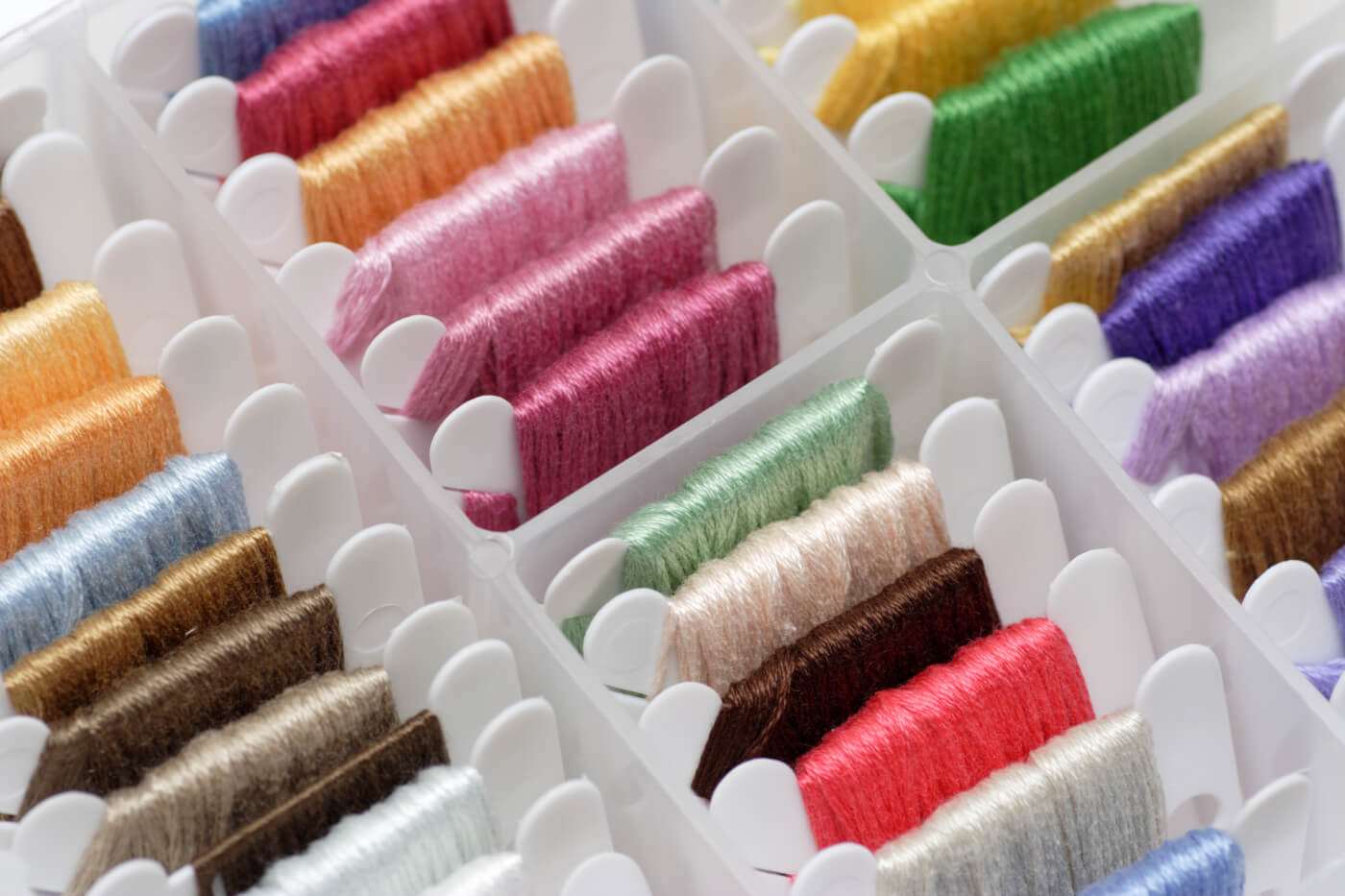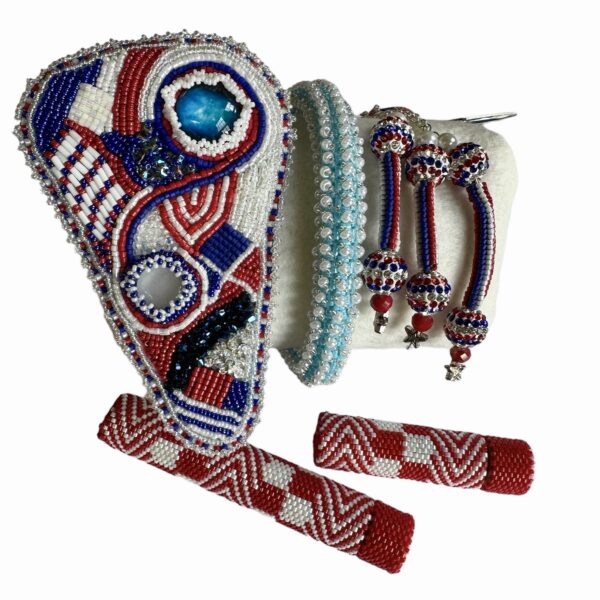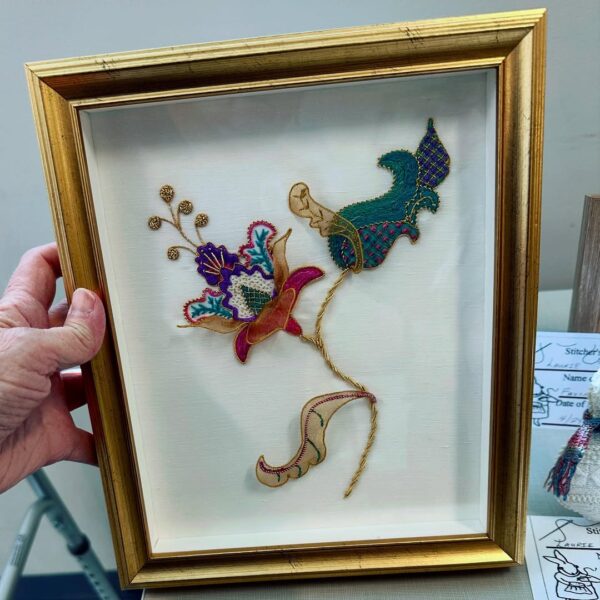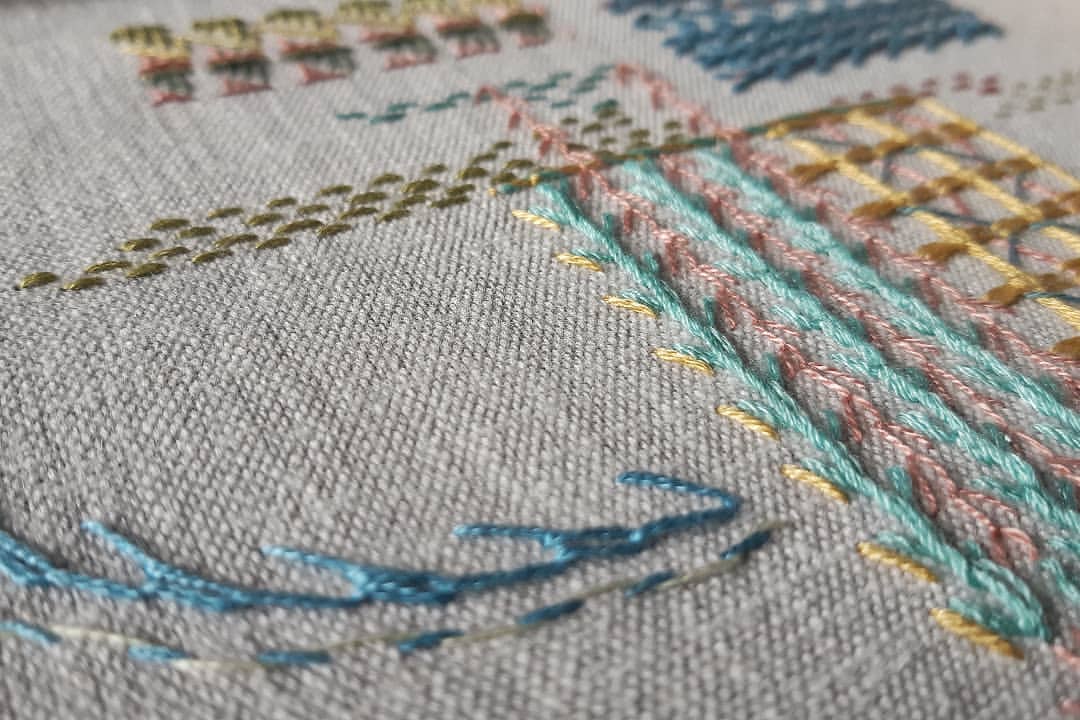
Embroidery beginners may come across a lot of terms you don’t understand at first. Today, on this Beginner’s Guide to Five Types of Embroidery we’ll cover 5 main categories you’re likely to encounter in your exploration of needlework: blackwork, whitework, stumpwork, cross stitch and crewel embroidery. You’ll learn what these terms mean, the history of each, and how you can learn and master the embroidery techniques which fall under each category.
For additional reference, we’ve created a comprehensive glossary of embroidery terms available for free here on the EGA website.
What is Blackwork?
Traditionally, blackwork embroidery used black threads on white fabric in both surface stitchery and counted work. Since the 1920s, it has been regarded as a counted thread embroidery traditionally worked in dark thread on a light background. This technique uses repeat geometric patterns as fillings for design units. Reversible blackwork is a special technique in which the embroidery is worked in the double running stitch so that the same, or an equally delightful, stitch pattern is produced on the underside. This type of blackwork is often referred to as Holbein embroidery.
The History of Blackwork
Black and white embroidery is mentioned in Chaucer’s Canterbury Tales, written between 1388 and 1400, and for centuries it has been found in peasant embroideries of eastern European countries. Of great antiquity, blackwork is believed to have originated in the Eastern Mediterranean and traveled with the Moors to Spain. Catherine of Aragon, the Spanish wife of Henry VIII, popularized it in England during the 16th century. In household inventories of their time Spanish work is mentioned, but it is not certain that this type of embroidery is the same as the blackwork now produced. During this period, Hans Holbein the Younger painted the English nobility in their elaborate garments, many of which were embellished with blackwork embroidery. Abandoned in the 17th century, blackwork has seen a revival in the early 20th century. Today in order to express contemporary ideas, it has become freer in style and color as it is used in both pictorial form and to embellish clothing. Principal stitches used in blackwork are the double running stitch, which is also called Holbein stitch, backstitch and darning stitch. Outlines, when used, are done in double running, stem, chain, couched, or other appropriate outlining stitches. Any even-weave white or light-colored fabric with any dark-colored working thread that is roughly equal in diameter to a thread of the ground fabric is suitable for blackwork. Modern pieces frequently are worked in dark fabrics with light threads. Metallic threads and paillettes can be used for accents.
Learn more about blackwork here on Wikipedia.
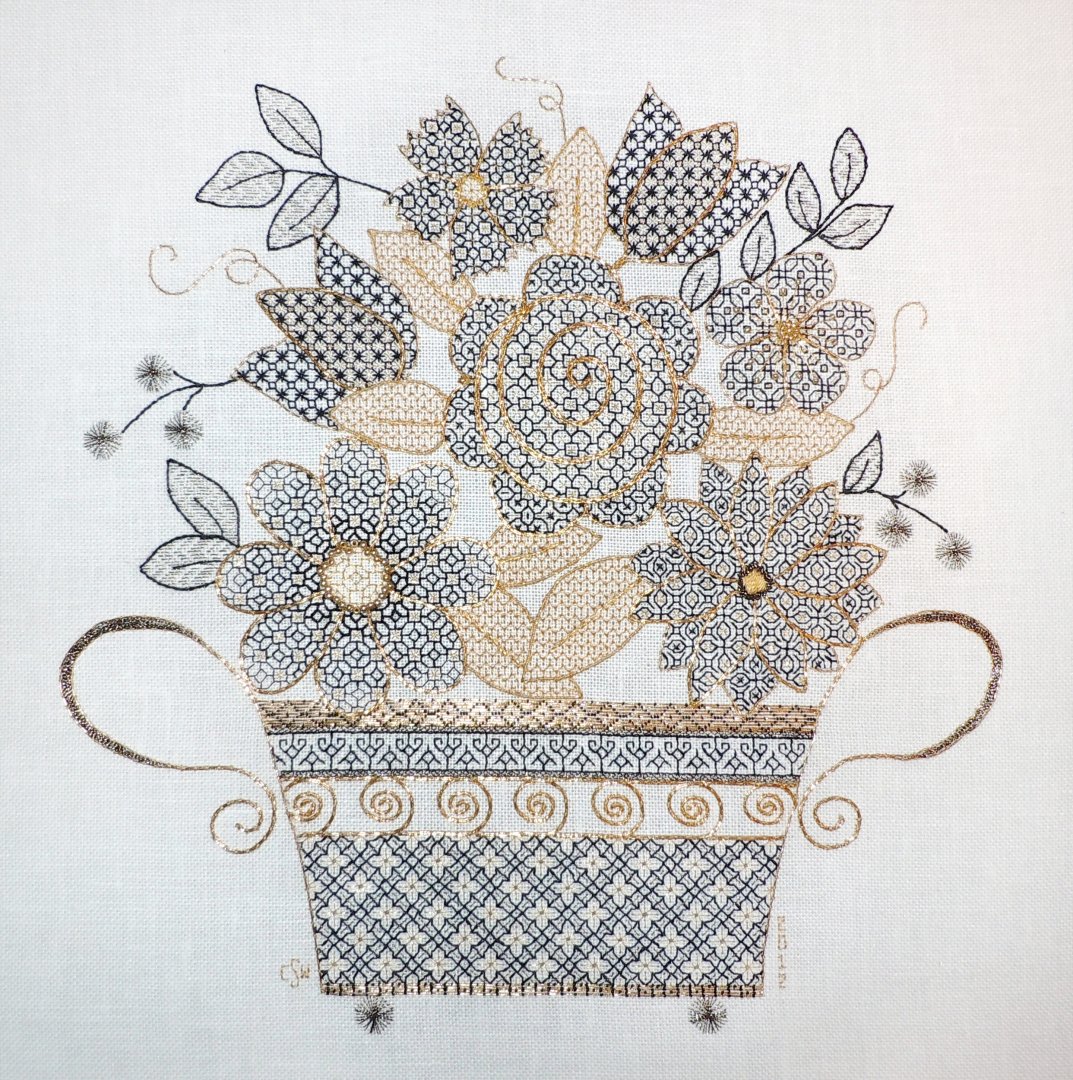
Resources to Learn & Master Blackwork
There are a number of excellent tutorials, free projects, classes and workshops covering various blackwork techniques online. Here are a few to bookmark:
- Halloween Blackwork Biscornu (free project)
- Introduction to Blackwork Tutorial from Peacock and Fig
- Introduction to Blackwork by Carol Leather
What is Whitework?
The term whitework describes all embroidery which is colorless and worked with white, unbleached cotton, or linen thread. Whitework embroidery falls into many categories but may be classed as coarse work and fine work. Coarse whitework includes embroidery techniques such as cutwork, Mountmellick, Hardanger, old hedebo, and reticello. Some examples of fine whitework include Ayreshire, Carrickmacross, chikan work, Dresden work, and shadow work appliqué.
The History of Whitework
Early examples of whitework date from around the 15th century, although records indicate it was produced earlier. Whitework was common in China, India and throughout most of Europe, where many of these techniques were used to embellish household linens or create religious items such as altar cloths and church vestments.
Learn more about whitework here on Wikipedia.
Resources to Learn & Master Whitework
There are a number of excellent tutorials, free projects, classes and workshops covering various whitework techniques online. Here are a few to bookmark:
- A Basic Study of Schwalm Embroidery online course from EGA (shown above)
- Whitework Embroidery Resources from The Spruce Crafts
- A Lesson in Whitework Embroidery from Classic Sewing Magazine
- Introduction to Whitework by Carol Leather
Interested in hands-on learning? Check out this extended study program in Winston-Salem, NC Sept 20-25, 2020: Isabella, A Ukranian Whitework Sampler with Terri Bay.
What is Stumpwork?
Also known as raised embroidery, stumpwork is a contemporary term for high-relief silk and metal thread embroidery, characterized by certain motifs and conventions. Some think that to be true stumpwork the embroidery must contain representations of one or more people. The following terms are used in connection with stumpwork embroidery: bullion, bullion embroidery, cabinet, casket, cotton wool, embossed (embost) work, embroidery on the stamp, figures, jewels, krinkle, mica, mirror surround, needlepoint, padding, paillette, pearls, purls, raised embroidery, rococo, sequin, slip, spangle, symbolism, vellum, wire frames, wooden mold. Just about every stitch in the needlework vocabulary is used in stumpwork.
The History of Stumpwork
This style of embroidery was popular in the 17th century, when it was commonly referred to as embossed or raised embroidery, as the term stumpwork was probably was not used until the 19th century. Historically, the most commonly used fabric was silk and the most commonly used threads were silk and metals. Additional materials commonly used were beads, pearls, spangles, mica, and jewels.
Learn more about stumpwork here on Wikipedia.
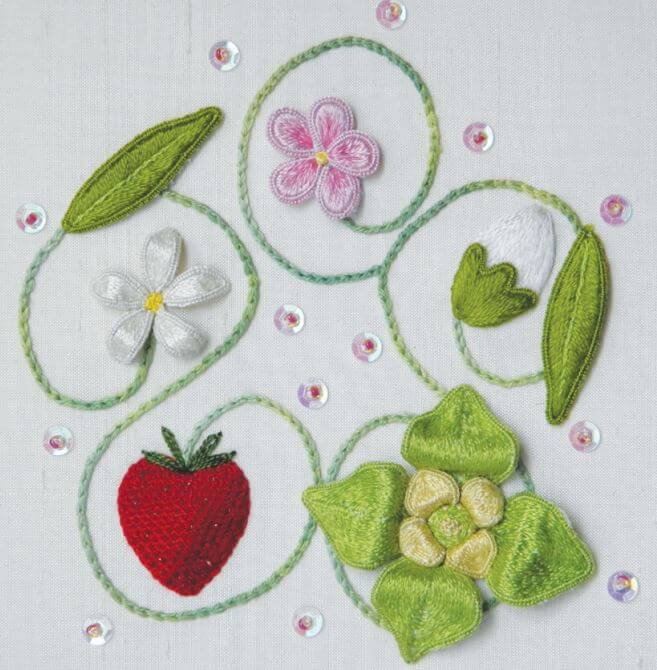
Resources to Learn & Master Stumpwork
There are a number of excellent tutorials, free projects, classes and workshops covering various stumpwork techniques online. Here are a few to bookmark:
- Stumpwork Butterfly (free project)
- Stumpwork Tutorial from Stitch Piece N Purl
- Introduction to Stumpwork by Carol Leather
What is Cross Stitch Embroidery?
As you might guess from the name, this technique uses two stitches that cross one another worked in a diagonal pattern. The cross stitch is a basic stitch used in many styles of embroidery and has been worked by embroiderers throughout the world. It has been found in embroideries from ancient China and the Near East. Its simple beauty consists of the points forming a perfect square. Cross stitch embroidery can be divided into two techniques: one is worked on fabric which has the stitches printed on it, and the other is counted on evenweave fabric. Counted cross stitch designs are worked from a chart or graph, with each square on the paper equal to a cross stitch.
There are two methods of working cross stitches: one is to complete each cross before going on to the next; the second is to work a row of half cross stitches and then return completing the cross stitches. It is traditional to work the bottom half of the cross from lower left to upper right. It is important to be consistent in the direction the stitches of the cross are formed. Variations of cross stitch include long-armed cross stitch and the Italian, or two-sided cross stitch. For counted cross stitch any evenweave fabric can be used with a thread suitable for the weave of the fabric. For printed cross stitch, any plain-colored fabric can be used with thread suitable for the fabric.
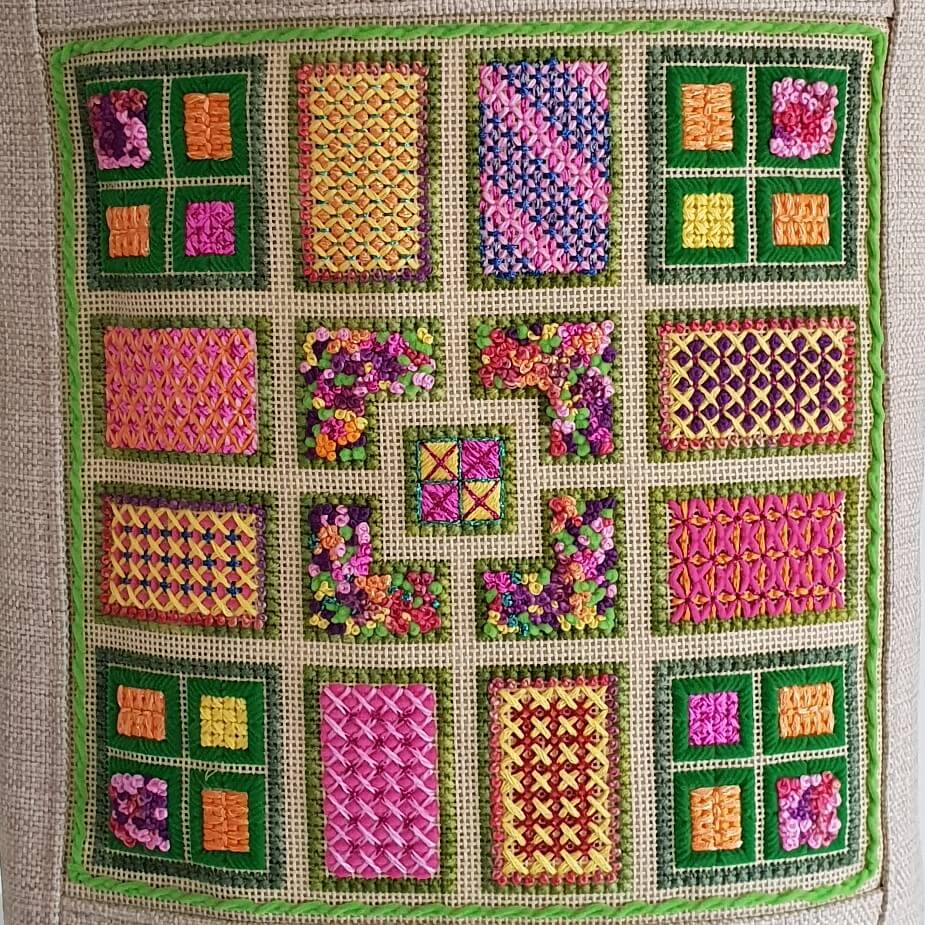
The History of Cross Stitch
Examples of cross stitch have been found throughout the world dating as far back as the middle ages. Traditionally, cross stitch has been used to embellish household linens, but the popularity of samplers kept this technique alive, and today it is primarily used to create decorative (rather than utilitarian) items.
Learn more about cross stitch here on Wikipedia.
Resources to Learn & Master Cross Stitch
There are a number of excellent tutorials, free projects, classes and workshops covering various blackwork techniques online. Here are a few to bookmark:
- Halloween Blackwork Biscornu (free project)
- Beginner’s Cross Stitch & Tutorial from Peacock and Fig
- Introduction to Cross Stitch Carol Leather
What is Crewel Embroidery?
Crewel is surface stitchery worked with a loosely twisted 2-ply wool yarn on a firmly woven fabric, The stitches are freely worked, rather than counted.
The stitches of crewel embroidery can be classified into 5 categories:
Flat: Back, straight, darning, running, cross, stem (crewel stitch), outline, satin, long and short, seed, fishbone, fern, chevron, herringbone, sheaf, and split.
Loop: Buttonhole (blanket), chain, Cretan, feather, fly, turkey work (tufted or carpet stitch), rope, Pekinese, and Vandyke.
Knot: French, bullion, and coral knots are used.
Couched or laid: Bokhara stitch, New England laid, Roumanian, trellis, cloud filling, and raised, whipped, and woven spider webs.
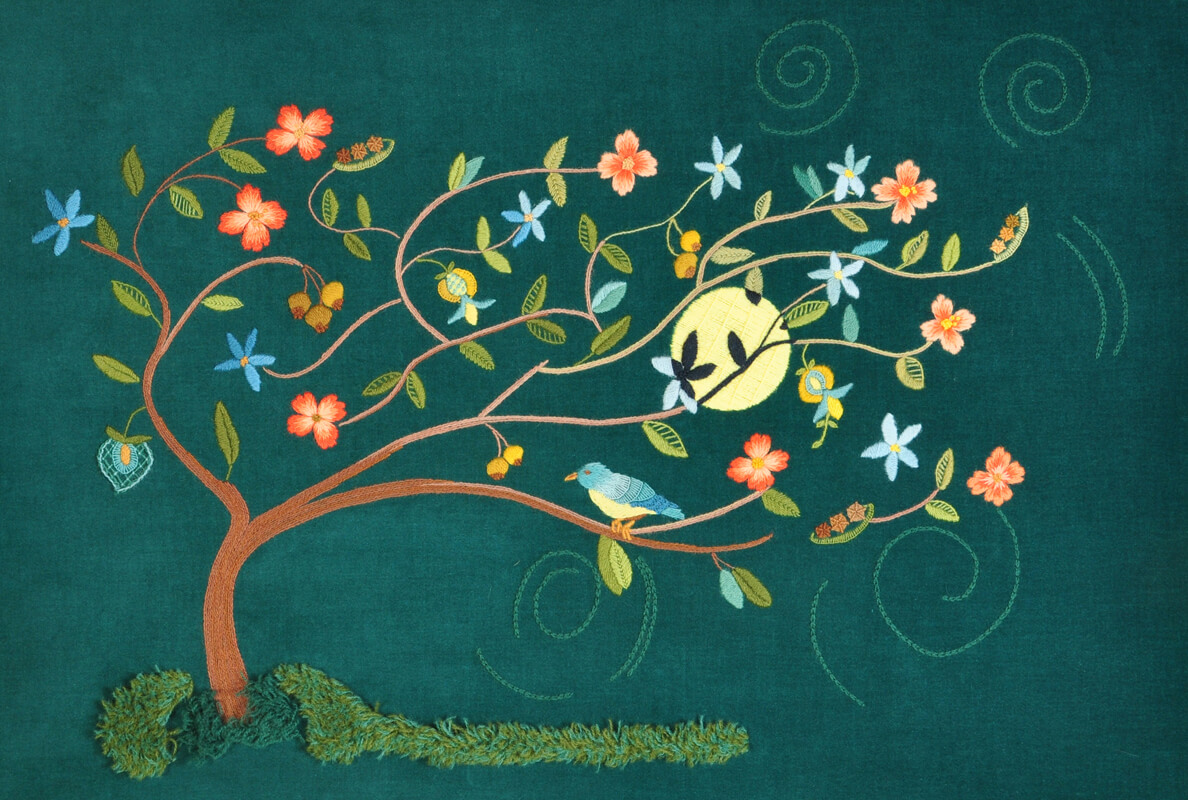
The History of Crewel Embroidery
The term crewel formerly referred to the wool yarn and probably came from the Anglo-Saxon work “cleowen” or ball of thread. The earliest surviving crewel embroidery is the Bayeaux Tapestry, dated 1067-70. During the Elizabethan era (1558-1603) the British East India Company opened trade routes to the Far East, and new embroidery designs flowed from east to west. There is much symbolism in the designs of this period and the colors were generally monochromatic, frequently in blues and greens with an occasional red. With the advent of the Jacobean era (James I, 1603-1625) the fanciful “Tree of Life” designs were frequently seen and the colors were brighter. The Queen Anne period (1702-1714) saw the use of silks replace wools, with the designs much lighter in appearance.
In Colonial America, fewer stitches were used in crewel embroidery. The New England laid stitch became popular because of its economical use of wool yarn. Today most designs are embroidered in 2-ply wool yarn with possible highlights in other threads and the majority of the designs show Jacobean influence.
Learn more about crewel embroidery here on Wikipedia.
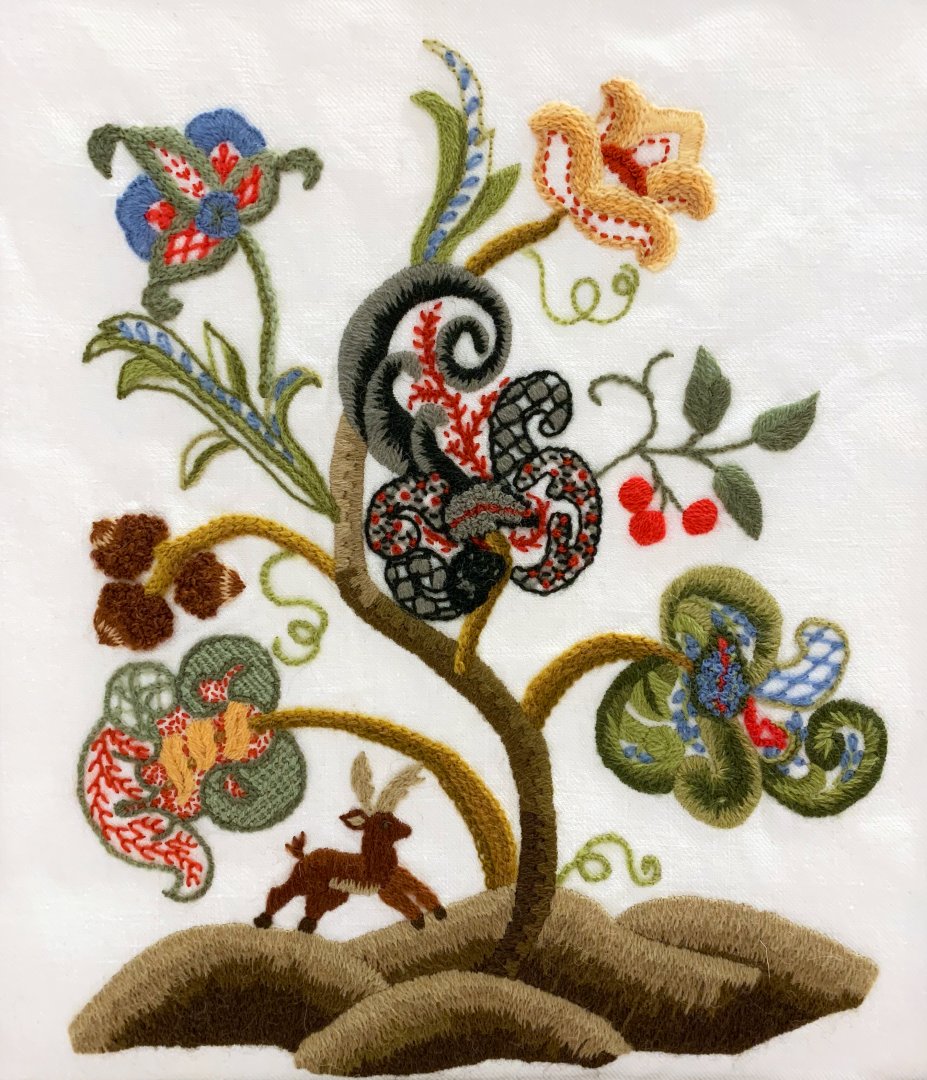
Resources to Learn & Master Crewel Embroidery
There are a number of excellent tutorials, free projects, classes and workshops covering various blackwork techniques online. Here are a few to bookmark:
- EGA Study Box: Crewel 1 & Crewel 2
- Crewel Wreath Ornament (free project)
- Crewel Embroidery Supplies & Resources from Needle ‘n’ Thread
We hope this post helps all embroidery beginners get started in a new needlework hobby. For more information, we have many more resources available here on our website. Non-members can access our PDF glossary of terms and projects for free; we also share information about scholarships and award opportunities, our monthly Stitch-Along, the EGA Library and more.
Like this post? Pin it!

